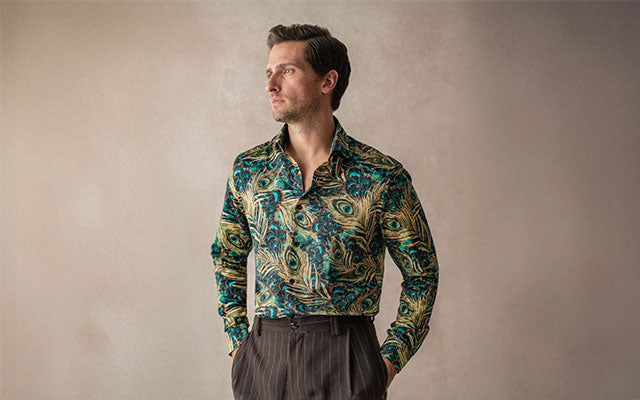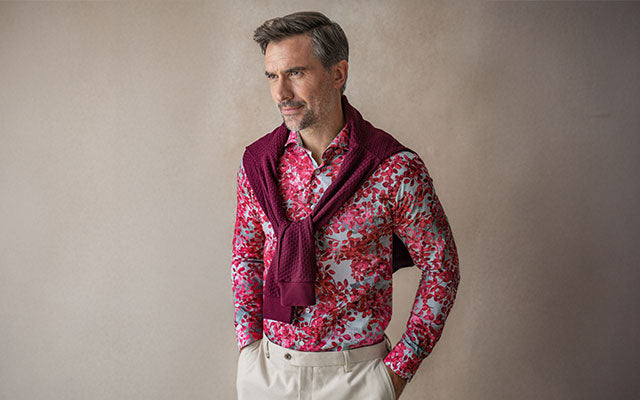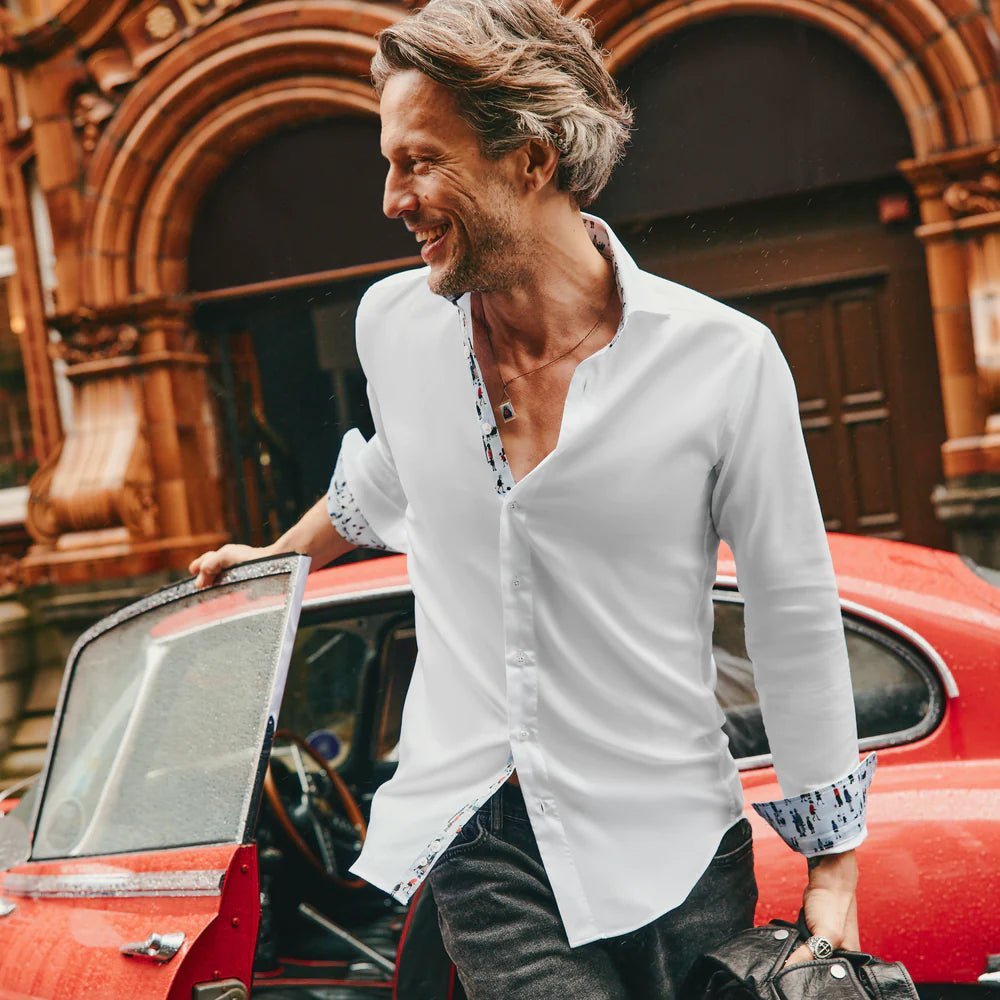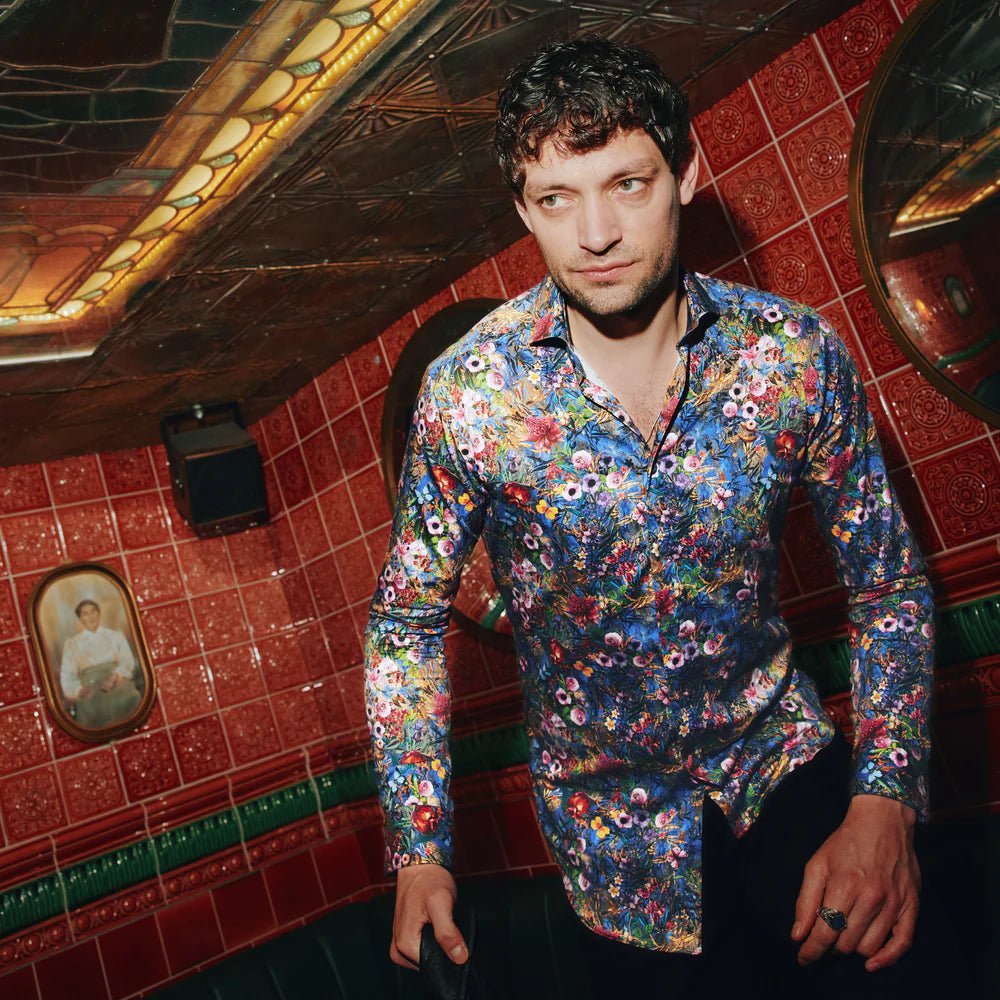Men's Opera Attire: A Guide to Dressing with Elegance
The Blog In Brief...
- Dressing for the opera requires attention to detail and a sophisticated sense of style
- Understanding the evolution of opera dress codes helps to navigate the modern expectations
- Essential components of men's opera attire include a well-fitted tuxedo, a high-quality shirt, and the right choice between a bow tie and a necktie
- Accessories like cufflinks, pocket squares, and opera scarves add a touch of personality to the ensemble
- Contemporary twists on classic opera attire allow for personal expression while still adhering to the formal dress code
- Different types of opera events may call for varying levels of formality, so it's important to be prepared
- Avoiding common mistakes in opera dressing, such as over- or underdressing, can ensure a seamless and elegant look
- Frequently asked questions provide further clarity on opera dress code expectations
Understanding Opera Attire Etiquette
Opera attire etiquette is steeped in tradition and reflects the formality of the occasion. While some may find dress codes overly restrictive, they serve a purpose in creating a cohesive and elegant atmosphere. By adhering to the dress code, you show respect for the art form and the performers, as well as your fellow audience members. Understanding the nuances of opera attire etiquette ensures that you make the right impression and feel comfortable in your ensemble.
The Evolution of Opera Dress Codes
Opera dress codes have evolved over the years, reflecting changes in societal norms and fashion trends. In the past, attending the opera was a grand affair that required formal attire, including tailcoats and evening gowns. However, as times have changed, so have dress codes. Today, most opera houses have embraced a more relaxed approach, allowing for a range of dress options. While black tie is still the standard for evening performances, some venues now welcome smart casual attire for matinee shows. Understanding the evolution of opera dress codes helps to navigate the modern expectations.
Decoding the Dress Code: What Does Black Tie Truly Mean?
When paired with formal shirts for men, black ties is the most common dress code for nights at the opera. But what does it truly mean? Black tie attire for men typically consists of a tuxedo, a white dress shirt, a black bow tie, black shoes, and formal accessories. The tuxedo can be either a classic fit, a slim fit, or an extra slim fit, depending on personal preference and body type. It's important to choose a well-fitted tuxedo that enhances your silhouette and exudes timeless elegance. Understanding the components of black tie attire allows you to make informed choices and ensures that you are appropriately dressed for the occasion.
The Essential Components of Men's Opera Attire
To achieve a polished and sophisticated look for the opera, it's important to pay attention to every detail of your ensemble. The essential components of men's opera attire include a well-fitted tuxedo, a high-quality shirt, and the right choice between a bow tie and a necktie. These elements come together to create a cohesive and elegant look that is appropriate for the occasion. By focusing on these key components, you can ensure that your opera attire is both stylish and refined.
Selecting the Right Tuxedo
The tuxedo is the centrepiece of men's opera attire and sets the tone for the entire ensemble. When selecting a tuxedo, consider the following:
- Fit: Choose a tuxedo that flatters your body type. Options include slim fit, classic fit, and tailored fit.
- Fabric: Opt for high-quality fabrics like wool or a wool blend for a sophisticated look and comfortable feel.
- Lapels: Peak lapels are a classic choice, while shawl lapels exude a more vintage vibe.
- Trousers: Look for trousers that sit comfortably on your waist and have a sleek, tailored silhouette.
- Accessories: Complete your tuxedo with a black bow tie, a crisp white pocket square, and formal shoes.
By selecting the right tuxedo, you can ensure that your opera attire is stylish, comfortable, and appropriate for the occasion.
The Significance of a Well-Chosen Shirt
A well-chosen shirt is an essential component of men's opera attire. Consider the following factors when selecting a shirt:
- Style: Opt for a classic fit shirt for a timeless look, or choose a slim fit for a more modern silhouette.
- Sleeve Length: Depending on the formality of the event, you may choose a long sleeve or a short sleeve shirt.
- Fabric: Look for high-quality fabrics with a unique silk touch finish for a smooth and luxurious feel.
- Collar: A traditional collar is the most formal choice, while a button-down collar adds a touch of casual sophistication.
- Colour: When it comes to opera attire, a crisp white shirt is the most appropriate choice, as it complements the elegance of the tuxedo.
By selecting a well-fitted and high-quality shirt, you can add the perfect finishing touch to your opera ensemble.
Bow Ties vs. Neckties: Making the Appropriate Choice
The choice between a bow tie and a necktie depends on personal style and the formality of the occasion. Consider the following:
- Bow Tie: A classic choice for formal events, the bow tie adds a touch of sophistication and is often associated with black tie attire.
- Necktie: A more versatile option, the necktie allows for a range of styles and knots, making it suitable for both formal and semi-formal occasions.
- Knot Style: Opt for a classic knot like the four-in-hand or the Windsor knot for a timeless look.
- Length: Ensure that your necktie reaches the waistband of your trousers and doesn't hang too short or too long.
- Colour and Pattern: Choose a necktie that complements your overall ensemble, whether it's a solid colour or a subtle pattern.
By making the appropriate choice between a bow tie and a necktie, you can add a touch of personal style to your opera attire.
Accessorising for the Opera
Accessorising is an opportunity to add a touch of personality to your opera attire. Consider the following accessories to complete your ensemble:
- Cufflinks and Studs: These small but significant details add a touch of elegance and sophistication to your look.
- Shoes and Socks: Choose formal shoes that complement your tuxedo and ensure that your socks match the colour of your trousers.
- Pocket Squares and Opera Scarves: These accessories add a pop of colour and can be folded in various ways to add flair to your outfit.
By choosing the right accessories, you can elevate your opera attire and make a stylish statement.

Cufflinks and Studs: The Devil is in the Details
Cufflinks and studs are small accessories that can make a big impact on your opera attire. Consider the following when selecting cufflinks and studs:
- Style: Choose cufflinks and studs that complement the overall aesthetic of your ensemble.
- Material: Opt for high-quality materials like silver or gold for a sophisticated and timeless look.
- Design: From classic and understated to bold and eye-catching, choose a design that reflects your personal style.
By paying attention to the details and choosing the right cufflinks and studs, you can add a touch of elegance and individuality to your opera attire.
Shoes and Socks: The Foundations of Formal Wear
The shoes and socks you choose to wear with your opera attire play a crucial role in completing your look. Consider the following:
- Shoes: Opt for formal shoes that complement your tuxedo, such as patent leather oxfords or velvet loafers.
- Fit: Ensure that your shoes are well-fitted and comfortable, as you'll be on your feet for extended periods.
- Socks: Choose socks that match the colour of your trousers to maintain a cohesive and polished appearance.
By paying attention to the foundations of your formal wear and selecting the right shoes and socks, you can ensure that your opera attire is stylish and appropriate for the occasion.
Pocket Squares and Opera Scarves: Adding a Touch of Personality
Pocket squares and opera scarves are small accessories that can add a touch of personality to your opera attire. Consider the following:
- Pocket Squares: Choose a pocket square that complements the colour scheme of your ensemble and experiment with different folding techniques to add visual interest.
- Opera Scarves: These silk or satin scarves can be worn with a tuxedo for a touch of old-world charm. Experiment with different tying techniques to achieve different looks.
By incorporating pocket squares and opera scarves into your opera attire, you can showcase your personal style and add a unique touch to your ensemble.
Contemporary Twists on Classic Opera Attire
While opera attire is traditionally steeped in tradition and formality, there is room for contemporary twists that allow for personal expression. By incorporating modern elements into traditional attire, you can add a touch of individuality while still adhering to the formal dress code. From experimenting with different colours and patterns to choosing unconventional accessories, contemporary twists on classic opera attire allow you to showcase your personal style and make a stylish statement.
Incorporating Modern Elements into Traditional Attire
Incorporating modern elements into traditional opera attire allows you to add a personal touch while still adhering to the formal dress code. Consider the following ways to modernise your ensemble:
- Colour and Pattern: Experiment with different colours and patterns for your shirt, bow tie, or pocket square while maintaining a cohesive and polished look.
- Accessories: Opt for unique cufflinks, statement watches, or even a lapel pin to add a touch of personality.
- Fit: Choose a tuxedo with a modern fit, such as a slim fit or tailored fit, to achieve a more contemporary silhouette.
By incorporating modern elements into your opera attire, you can create a look that reflects your personal style while still respecting the traditions of the occasion.
When and How to Break the Rules Stylishly
While it's important to adhere to the dress code for opera events, there are times when it's acceptable to break the rules stylishly. Consider the following:
- Venue and Occasion: Take into account the specific venue and occasion when deciding how strictly to adhere to the dress code.
- Personal Style: Use your personal style as a guide to add unique touches to your ensemble while still maintaining an overall formal look.
- Fashion Trends: Incorporate current fashion trends in a tasteful way to add a contemporary twist to your opera attire.
By breaking the rules stylishly, you can showcase your individuality while still respecting the traditions of the opera.
Preparing for Different Types of Opera Events
Different types of opera events may call for varying levels of formality, so it's important to be prepared. Understanding the dress code expectations for different types of opera performances ensures that you are appropriately dressed for the occasion. Whether it's dressing for opening nights, regular performances, or matinee shows, taking the time to consider the specific event can help you navigate the dress code and ensure a seamless and elegant look.
Dressing for Opening Nights vs. Regular Performances
Opening nights at the opera are highly anticipated and tend to be more formal occasions. When dressing for opening nights, consider the following:
- Black Tie: Opening nights often call for black tie attire, including a tuxedo, white shirt, and black bow tie.
- Formal Accessories: Pay attention to the details, such as cufflinks, studs, and pocket squares, to elevate your ensemble.
- Regular Performances: While regular performances may be slightly less formal, it's still important to dress appropriately. Opt for black tie or smart casual attire, depending on the venue and occasion.
By understanding the expectations for opening nights versus regular performances, you can ensure that your attire is suitable for the specific event.
Matinee Performances: A Slightly Relaxed Approach
Matinee performances at the opera often have a slightly more relaxed dress code compared to evening performances. When dressing for a matinee, consider the following:
- Smart Casual: Matinee performances may allow for smart casual attire, which can include a blazer, dress shirt, trousers, and dress shoes.
- Avoid Overdressing: While it's still important to dress appropriately, matinee performances generally have a more relaxed atmosphere, so there may be more flexibility in the dress code.
- Comfort: Ensure that your attire is comfortable for a daytime performance, as you'll likely be sitting for an extended period.
By taking a slightly more relaxed approach to your attire for matinee performances, you can maintain a polished look while still feeling comfortable.
Common Mistakes to Avoid in Opera Dressing
When it comes to dressing for the opera, there are some common mistakes that should be avoided. By being aware of these pitfalls, you can ensure that your opera attire is flawless and appropriate for the occasion.
Overdressing vs. Underdressing: Finding the Balance
One common mistake in opera dressing is either overdressing or underdressing for the occasion. Finding the right balance is key to creating a polished and appropriate look. Consider the following:
- Dress Code: Familiarise yourself with the specific dress code expectations for the opera event and venue.
- Venue and Occasion: Take into account the formality of the venue and the occasion when selecting your attire.
- Personal Style: Use your personal style as a guide but ensure that your ensemble still adheres to the overall formal dress code.
By finding the balance between overdressing and underdressing, you can ensure that your opera attire is appropriate and stylish.
Faux Pas in Men’s Formal Wear
While dressing for the opera, it's important to avoid certain faux pas that can detract from your overall look. Consider the following:
- Excessive Accessories: Avoid overloading your ensemble with too many accessories, as it can appear cluttered and distract from the overall elegance.
- Ill-Fitted Attire: Wearing ill-fitted attire can ruin the overall look and detract from the sophistication of your ensemble.
- Inappropriate Colours: Stick to classic and neutral colours for formal wear to maintain a timeless and elegant appearance.
By avoiding these common faux pas, you can ensure that your opera attire is refined and stylish.
Frequently Asked Questions
Is it mandatory to wear a tuxedo to the opera?
No, it is not mandatory to wear a tuxedo to the opera. However, a tuxedo is the most appropriate and traditional choice for men's opera attire, especially for evening performances. Check the dress code requirements of the specific opera venue to ensure that you are appropriately dressed.
Can I wear a black suit instead of a tuxedo?
While a black suit can be a stylish alternative to a tuxedo for some semi-formal occasions, it may not be the most suitable choice for the opera. The traditional dress code for the opera calls for a tuxedo, which exudes a higher level of formality and elegance. Consider the specific dress code requirements of the opera venue before opting for a black suit.
What are the acceptable colours for men's opera attire?
Classic colours such as black, navy, and dark grey are the most appropriate choices for men's opera attire. These colours exude sophistication and elegance, and they are versatile enough to complement a range of shirt and accessory options. When in doubt, stick to these timeless shades to ensure that your opera attire is appropriate for the occasion.
How should I choose my opera shoes?
When choosing opera shoes, opt for formal options such as patent leather oxfords or velvet loafers. These styles complement the formality of the occasion and pair well with a tuxedo. Ensure that your shoes are well-fitted and comfortable, as you'll be on your feet for extended periods during the opera. If you have any doubts, consult the dress code requirements or seek professional advice.
Can patterned shirts be worn to the opera?
Patterned shirts can add a touch of personality to your opera attire, but it's important to choose patterns that align with the dress code expectations. Opt for subtle patterns and avoid loud or flashy prints. Stick to classic patterns such as stripes, checks, or subtle polka dots. It's also important to ensure that the shirt is well-fitted and appropriate for the occasion, whether it's a short sleeve or long sleeve option.
If you are heading on a first date, read our indispensable guide, First Date Fashion: Achieving Suave Simplicity






